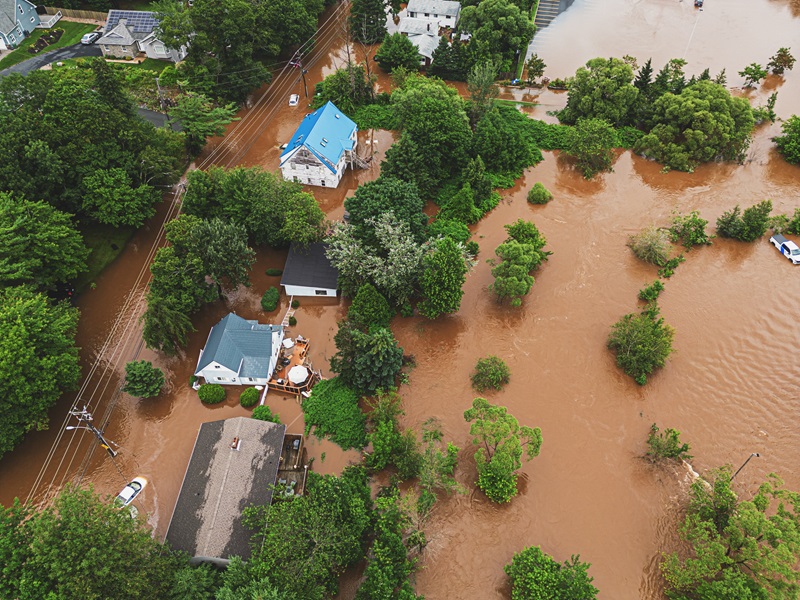Three necessities for Canada’s national flood insurance program

Canada’s upcoming national flood insurance program needs to specify exclusions, phase in risk-based premiums, and provide incentives for flood resilience measures, the Canadian Climate Institute (CCI) says in a recent blog.
A low-cost flood insurance program should drive safer decisions about living in flood zones, CCI says in a blog posted earlier this week. The following three design measures should be considered, say authors Camila Flórez Bossio and Ryan Ness, a CCI senior research associate for adaptation and the director of adaptation research, respectively.
Specifying exclusions
The insurance program should cover only homes built before it comes into effect.
“This would set a cap on the pool of insured properties and send a clear message that new homes in high-risk flood zones would not be covered, discouraging interest in developing new housing in those areas,” Bossio and Ness write in High and dry: The rising tide of flood risks and the insurance dilemma, originally published Mar. 12 in Policy Options, the digital magazine of the Institute for Research on Public Policy.
The federal government has previously said the program should be announced publicly in Spring 2024. Insurance Bureau of Canada (IBC) is calling for the government to launch the program in April 2025.
Phasing in risk-based premiums
Premiums should be adjusted over time to reflect a home’s flood risk, the authors write in the blog. This would increase current and prospective homeowners’ awareness and encourage them to reduce their risk.
“Initially, the program would be likely to offer subsidized premiums to make them affordable, but a planned transition toward fully risk-based premiums would be essential. Long-term support for low-income households would be critical, however, to ensure that risk-based pricing did not disproportionately hurt those least able to afford it.”
Providing incentives for flood resilience measures
The program should offer reduced premiums for homeowners and communities that bring in measures to reduce flood risk, Bossio and Ness write. These measures could range from structural changes that physically protect properties to land-use practices that enhance natural water absorption and reduce runoff.
“Reducing premiums for mitigation efforts would lower immediate insurance costs and contribute to greater flood resilience across the country. Such measures would go a long way to ensuring that low-cost flood insurance doesn’t unintentionally increase risk and cost.”
But as the federal government’s flood insurance task force points out, the national program alone will not make Canada resilient to increasing risk. Local governments, believing insurance would protect homeowners, could continue to permit the building of housing in high-risk areas and relax flood-proofing requirements. “Both homeowners and governments could remain disinclined to invest in protecting the 1.5 million homes already under greatest threat.”
One thing that’s needed is action by all orders of government to restrict development in floodplains. Tyrone McNeil, president and tribal chief with the Stó:lo Tribal Council in British Columbia, suggested during the recent CatIQ Connect conference that insurers play a greater role in helping to manage high-risk flood areas in Indigenous areas.
“At some point, you as insurers are going to have to start guiding development away from the highest-risk flood areas by saying no to coverage,” he said. “And you’d be like-minded with us in that, because we want to promote resilience, promote nature-based solutions for those long-term strategies and actions that we’ll all benefit from.”
While the federal government says 10% of Canadians live in high-risk flood areas, the opposite is true for First Nations people, 90% of whom are living in these areas, McNeil says.
“Insurance availability for high-risk areas is needed to ensure that Canadians aren’t left to face increasingly devastating flood losses on their own,” Bossio and Ness write.
“Done poorly, public flood insurance could lead to more damage. Done well, it could protect vulnerable Canadians in at-risk areas by offering immediate financial relief while creating incentives for developing countrywide long-term flood resilience in an overheating climate.”
Feature image by iStock.com/shaunl







